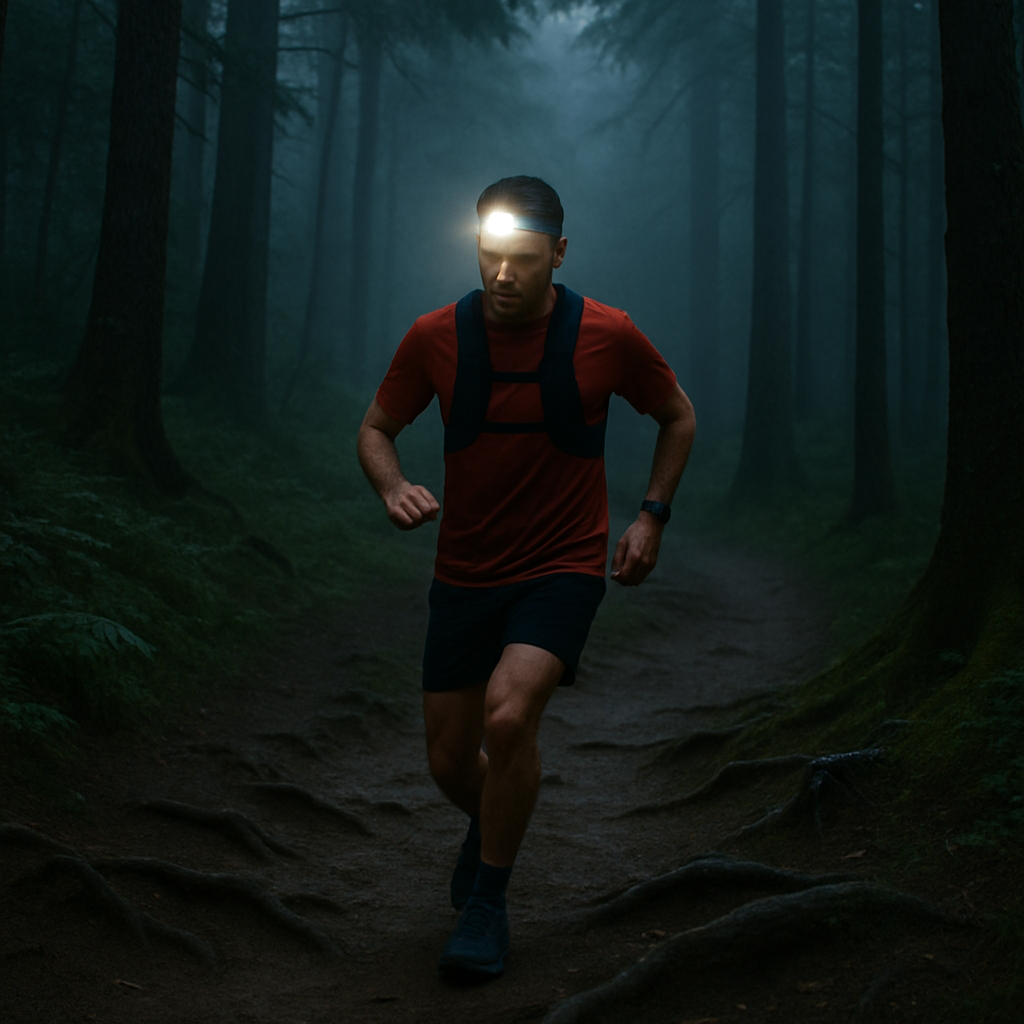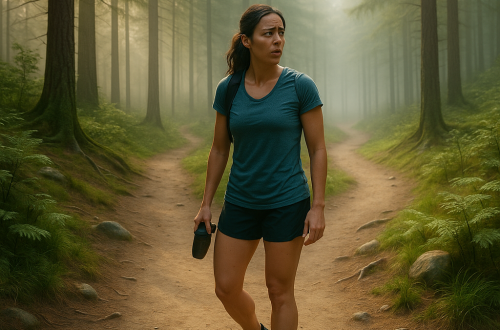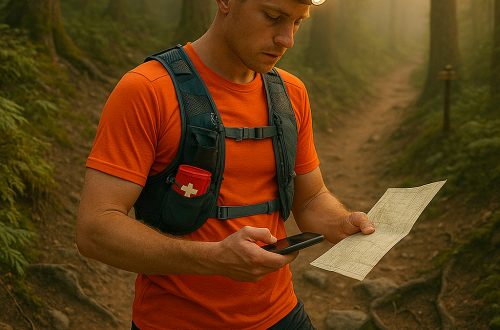
How do I run safely in the dark on trails?
Why run trails in the dark?
There’s something quietly magical about running trails in the dark. The world feels still. Your senses sharpen. Every footfall becomes intentional. Whether you’re squeezing in a run after work or training for an ultra that includes night segments, trail running in the dark can be both rewarding and challenging. But let’s be honest—it can also feel a little intimidating at first.
That’s why running safely in the dark is less about bravado and more about preparation. With the right mindset, gear, and habits, you can turn those shadowy miles into some of your most memorable runs.
Essential gear for night trail running
Running in the dark isn’t just about flipping on a flashlight and hoping for the best. The right gear can make or break your experience. Here’s what you’ll need:
- Headlamp: This is non-negotiable. A quality headlamp with at least 200 lumens is a must. Look for one with adjustable brightness, a red light mode (to preserve night vision), and a comfortable fit. Bonus points if it’s rechargeable.
- Backup light: Always carry a spare. A small handheld flashlight or clip-on light can save the day if your headlamp fails mid-run.
- Reflective gear: Even if you’re deep in the woods, reflective elements help others (and rescue teams, if needed) spot you. Think vests, ankle bands, or reflective strips on your pack.
- Trail shoes with good grip: Uneven terrain becomes trickier in low light. Shoes with solid traction help prevent slips on wet roots or loose gravel.
- Layers and weather protection: Temperatures drop fast after sunset. Bring a light windbreaker or thermal layer, especially in the mountains or during shoulder seasons.
Real-world tip: A friend of mine once forgot his backup light on a foggy night run. His headlamp battery died halfway in, and he had to hike out using the dim glow from his phone screen. Lesson learned: redundancy matters.
How to stay visible and be seen
Visibility isn’t just about seeing—it’s about being seen. Even if you’re not near roads, other trail users (runners, cyclists, hikers) may be out there too. Here’s how to stay visible:
- Wear reflective clothing or accessories: Look for gear with built-in reflective elements or add your own with clip-on bands or stickers.
- Use blinking lights: A red blinking light on your back (like a bike tail light) makes you visible from behind.
- Choose bright or light-colored outerwear: It’s easier to spot than dark colors, especially in moonlight or fog.
Think of it this way: if someone were looking for you in the dark, how easily could they find you?
Safety strategies for solo night runs
Running solo at night adds another layer of risk—but also a sense of solitude that many runners cherish. To stay safe:
- Tell someone your route and ETA: Always let a friend or family member know where you’ll be and when to expect you back.
- Stick to familiar trails: Night isn’t the time to explore new routes. Familiarity helps you anticipate terrain and avoid getting lost.
- Use GPS tracking: Apps like Strava, Garmin LiveTrack, or Road ID let others follow your location in real time.
- Carry ID and a whistle: In case of emergency, these small items can make a big difference.
- Trust your gut: If something feels off—whether it’s a strange noise or a sudden shift in weather—don’t ignore it. Turn back or reroute.
One runner I know carries a small personal alarm. It’s lightweight and loud enough to scare off wildlife or alert others if needed. Peace of mind is worth the extra ounce.
Navigating trails with confidence
Running trails in the dark is a different beast than road running. Roots, rocks, and uneven surfaces demand your attention. Here’s how to stay upright and confident:
- Keep your light angled down: Your headlamp should illuminate the ground 6–10 feet ahead. This helps you spot obstacles early.
- Shorten your stride: Smaller steps give you more control and reduce the risk of tripping.
- Slow down on technical terrain: It’s not about speed—it’s about staying safe and steady.
- Use trekking poles if needed: On steep or slippery trails, poles can provide extra balance and support.
Pro tip: Practice on your regular trails during daylight, then return at night. You’ll already know the tricky spots, which builds confidence when visibility drops.
Mental tips for running in the dark
Let’s talk about the mental game. Running in the dark can stir up anxiety—especially if you’re new to it. Here’s how to manage the mind as well as the miles:
- Start with a buddy: Running with a friend can ease nerves and make the experience more enjoyable.
- Use music or a podcast (safely): If you’re comfortable, a low-volume playlist can distract from eerie sounds. Just keep one ear open to stay aware.
- Focus on your breath and rhythm: Grounding yourself in your breath can calm nerves and keep you present.
- Reframe fear as alertness: That heightened awareness? It’s your body doing its job. Use it to stay sharp, not scared.
One runner I coached used to dread night runs—until she realized they made her feel more alive. “It’s like meditation in motion,” she told me. “I’m more focused, more present. It’s become my favorite time to run.”
What to do if something goes wrong
No one likes to think about worst-case scenarios—but being prepared can turn a crisis into a manageable hiccup. Here’s what to keep in mind:
- If you get lost: Stop, breathe, and backtrack to your last known point. Use your GPS or map. Avoid wandering aimlessly.
- If your light dies: Use your backup or phone flashlight. If you’re truly stuck, stay put and call for help if you have signal.
- If you’re injured: Assess the injury. If you can walk, move slowly toward safety. If not, use your whistle or phone to call for assistance.
- If wildlife appears: Stay calm. Make yourself big, speak firmly, and back away slowly. Most animals want nothing to do with you.
Preparation isn’t paranoia—it’s what allows you to run with confidence, even when the unexpected happens.
Conclusion
Running trails in the dark can be a deeply rewarding experience—one that sharpens your senses, builds resilience, and connects you with nature in a whole new way. But it’s not something to take lightly. With the right gear, a thoughtful plan, and a calm mindset, you can run safely and confidently through the night.
So next time the sun dips below the horizon and your legs are itching for a run, don’t hesitate. Grab your headlamp, lace up, and step into the quiet magic of the night trail. You might just find that it’s your new favorite time to run.
Powered by: aiContent.live





